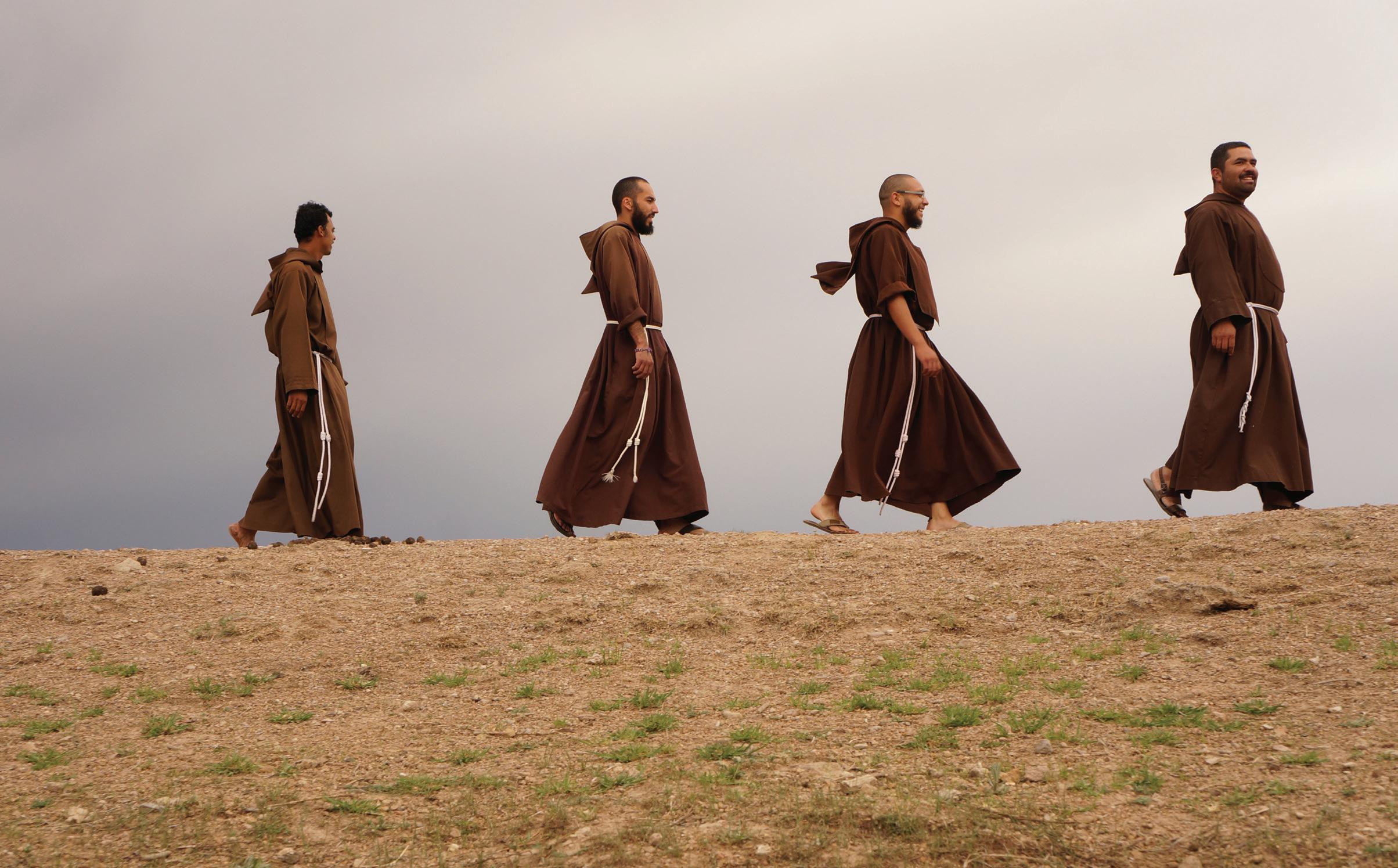
48 minute read
Editorial | Christopher Heffron
POINTSOFVIEW | EDITORIAL
Voter Suppression Is Civic Aggression
Advertisement
When I’m disillusioned by the rhetoric surrounding this year’s election, I focus on a quote from Father Theodore Hesburgh: “Voting is a civic sacrament.” Hesburgh, as a white American, likely never faced opposition when he voted, as nonwhites had in southern states before 1965. Frankly, he had the luxury to be optimistic about this civil liberty.
But that doesn’t mean he isn’t right. Voting is a sacred privilege, our civic responsibility to select the candidates who will best serve our country. And while voting is our duty, for some it’s not a priority. According to the United States Election Project, 139 million Americans voted in the 2016 election—only 60 percent of the population.
The 2020 election, however, is a different animal entirely. COVID-19 has made voting in person irresponsible, if not dangerous. Voting by mail, the logical alternative, has been called into question these past couple of months as unreliable. The possibility of not having our votes accurately counted has suddenly become real.
A THORNY HISTORY
Our country’s history with voting for those outside the white/male paradigm is appalling. Abolitionists first proposed extending voting rights to newly freed slaves during Reconstruction, and it was an uphill battle from the start. Although the 15th Amendment in 1870 assured the rights for men of any color to vote, Jim Crow laws in southern states made it all but impossible.
Several tactics were used at the time to keep voting a whites-only exercise. Literacy tests, moral character exams (the irony is too rich), and poll taxes were instituted to keep African Americans from exercising this right. It wasn’t until President Lyndon Johnson signed the Voting Rights Act in 1965, prohibiting racial discrimination with voting, that progress was made. Suffragettes had their own bloodied journey to the polls as well.
COVID-19 has only complicated this year’s election. Science and common sense tell us that wearing masks and social distancing can slow the spread of the disease, so gathering to vote in enclosed spaces would be hazardous. Hence, the need for safe and reliable mail-in voting. But how many of us will put this privilege into practice? A 2020 Pew Research study found that, while mail-in voting statistics differ from state to state, overall rates across the country are relatively low. But COVID-19 has turned absentee voting from an option in past elections to a necessity in this one. And then the noise began—on both sides of the political aisle.
President Donald Trump said in August that he opposed funding the United States Postal Service to deter mail-in voting, asserting that an influx of ballots cannot be accurately counted, thus undermining the integrity of the election. His opponents have charged the president with political gamesmanship to guarantee his reelection. Whatever the president’s motives, voter suppression is certainly a regression. If there’s a chance that mail-in votes won’t be counted, which would include ballots from American soldiers overseas, the election becomes pointless.
PRAY, DISCERN, VOTE
To be clear: Voter suppression is a bipartisan strategy. It has been employed by both parties historically. But never has America had to deal with a presidential election and a pandemic that has killed 177,000 of its own in the same year. If a candidate threatens, through rhetoric or legal action, to invalidate our votes, it is a threat to democracy. But it cuts even more deeply: Peel a layer back and it is our own individual worth as citizens that is being undermined.
It’s an unprecedented moment in our history, and it hasn’t gone unnoticed. Pope Francis, in fact, has had his eye on this election all year. In a January meeting with the US bishops in Rome, before COVID-19 got a foothold in this country, the pope imparted words of wisdom on the election to those present. “Teach your people discernment by you stepping back from the sheer politics of it. If you try to step back and say, ‘but here are the major moral issues that we face,’ that’s what is most important,” the pope was quoted as saying.
That’s a good reminder. In every election, we as citizens and as Catholic Christians must shoulder the weight of many social issues when we vote, not just one or a few. That requires discernment, prayer, and voting our conscience.
But perhaps our prayers should also include a petition that our ballots will be counted, that our government officials will respect this civic sacrament, and honor the rights of those who voted for them. Only then do they deserve our vote of confidence.
FAITH IN FOCUS images of god’s creation
Photos by Javier Garza, OFM Cap | Text by Daniel Imwalle
Inspired by Franciscan spirituality, a friar and photographer in Mexico trains his camera on the world around him.
Franciscans figure in strongly to the history of Mexico and the presence of the Church there. Juan Diego famously reported the Marian apparitions of Our Lady of Guadalupe to Bishop Juan de Zumárraga, a Franciscan friar. The religious order established numerous missions across the region, with many still operational to this day. In a country with nearly 93 million Catholics, one doesn’t have to travel far before seeing signs of the Church’s presence, whether they be basilicas or the brown robes of a Franciscan habit.
In the northern foothills of the Sierra Madre Oriental mountain range, the bustling city of Monterrey, Mexico, is home to about 1.1 million people and a major industrial center in the Latin American nation. But like everywhere in Mexico, the Church is intertwined with society. Away from the towering modern skyscrapers and factories churning out raw materials such as steel and concrete, the St. Pio Friary, located southeast of the city, stands in stark contrast as a bastion of peace, introspection, and spiritual rejuvenation. A mission of the Capuchin Franciscans Western America Province (headquartered in Burlingame, California), the friary is administered by the Capuchin Franciscans of north-
images of god’s creation

ern Mexico. It’s a place for those discerning their vocation to engage in faith formation, prayer, and study while also serving as a springboard to connecting future friars to the surrounding community, local parishes, and schools.
THROUGH A FRANCISCAN LENS
This is also the place where Friar Javier Garza, OFM Cap, responded to the call to religious life. Finding his university studies in business administration to be less than fulfilling, a young Javier turned to a weekly religious education class for comfort and deeper meaning.
Around the same time that he made the leap to discerning the vocation of religious life, Friar Javier discovered a profound passion for photography. He’s honed his skill as a photographer for the past 10 years, and it’s clear that his identity as a friar is inseparable from his art. Friar Javier sees the world—figuratively and literally—through a Franciscan lens.
Javier Garza, OFM Cap, is a Franciscan friar and photographer in Monterrey, Mexico. He joined the Capuchins of northern Mexico in 2008. Daniel Imwalle is the managing editor of this publication. OPPOSITE PAGE: In this photo, titled Following the Path, the four friars are symbolic of the long line of Franciscans who devoted their lives to the Gospel. The movement captured in the photo hints at the coming of future followers of Francis. ABOVE: Three friars cast a fishing net, bringing to mind Jesus’ invitation to Peter and Andrew in Matthew 4:19: “‘Come after me, and I will make you fishers of men.’”
BELOW: The balance and simplicity of Reflection of Peace echo core values of Franciscan religious life. RIGHT: The life of a friar can be somewhat of a balancing act. Time spent alone absorbing the beauty of nature can help reenergize efforts to minister to members of the faith community.


TOP: “The areas of seeking, listening, dialogue, and discernment make fraternity a privileged place for encountering God and for the formation and companionship of our brothers,” says Friar Javier. BOTTOM: The title of this photo, Mission, implies the Franciscan call to spread the Gospel to all of God’s people.


TOP: As a friar looks out over a verdant pasture, the words of John 10:11 come to mind: “I am the good shepherd. A good shepherd lays down his life for his sheep.” BOTTOM: As Pope Francis reminds us in his encyclical “Laudato Si’,” caring for creation is a crucial element of authentic Christian living.

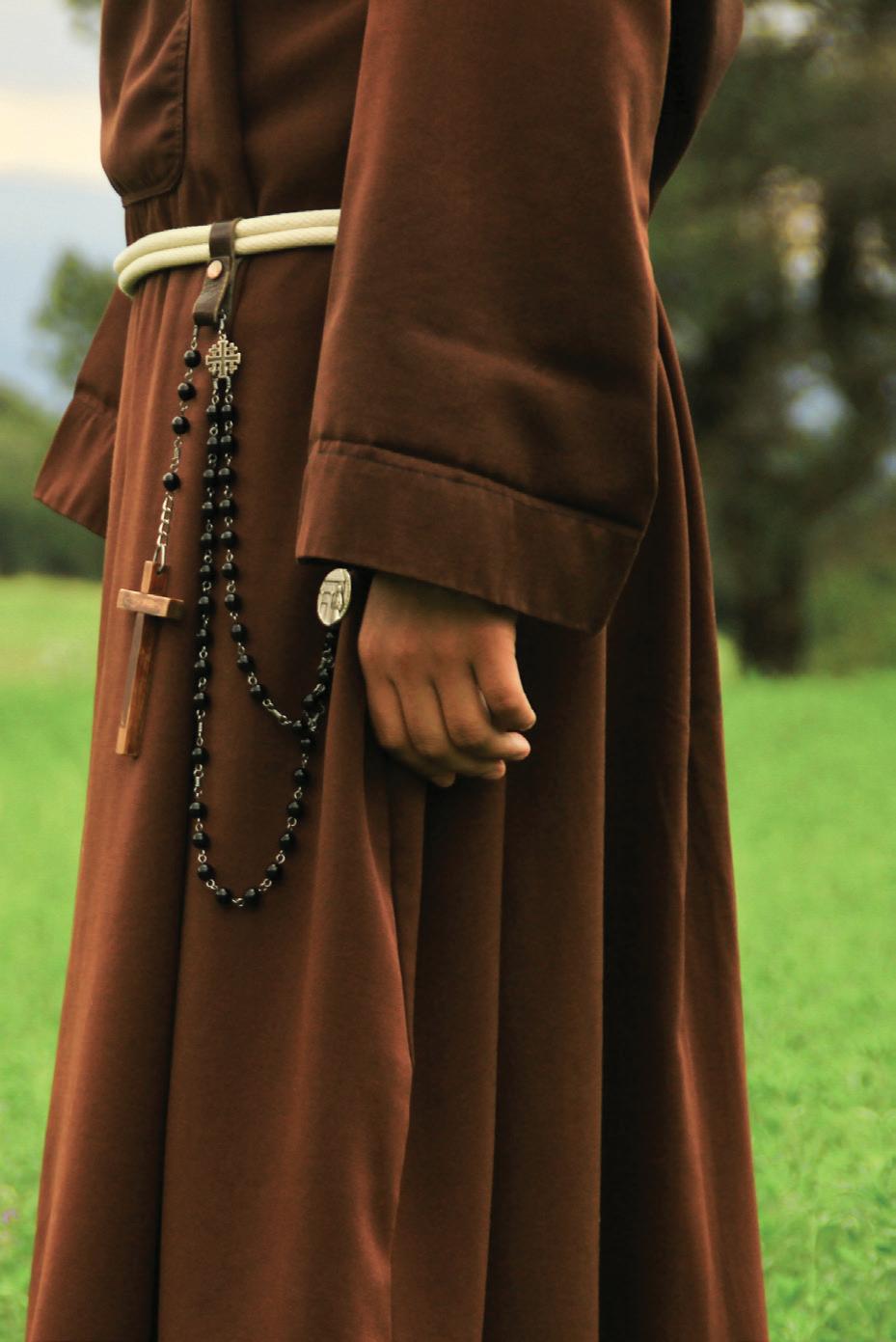
ABOVE: A friar’s rosary hangs from his cord. Devotion to Mary is immensely popular in Mexico, a nation of nearly 93 million Catholic faithful.
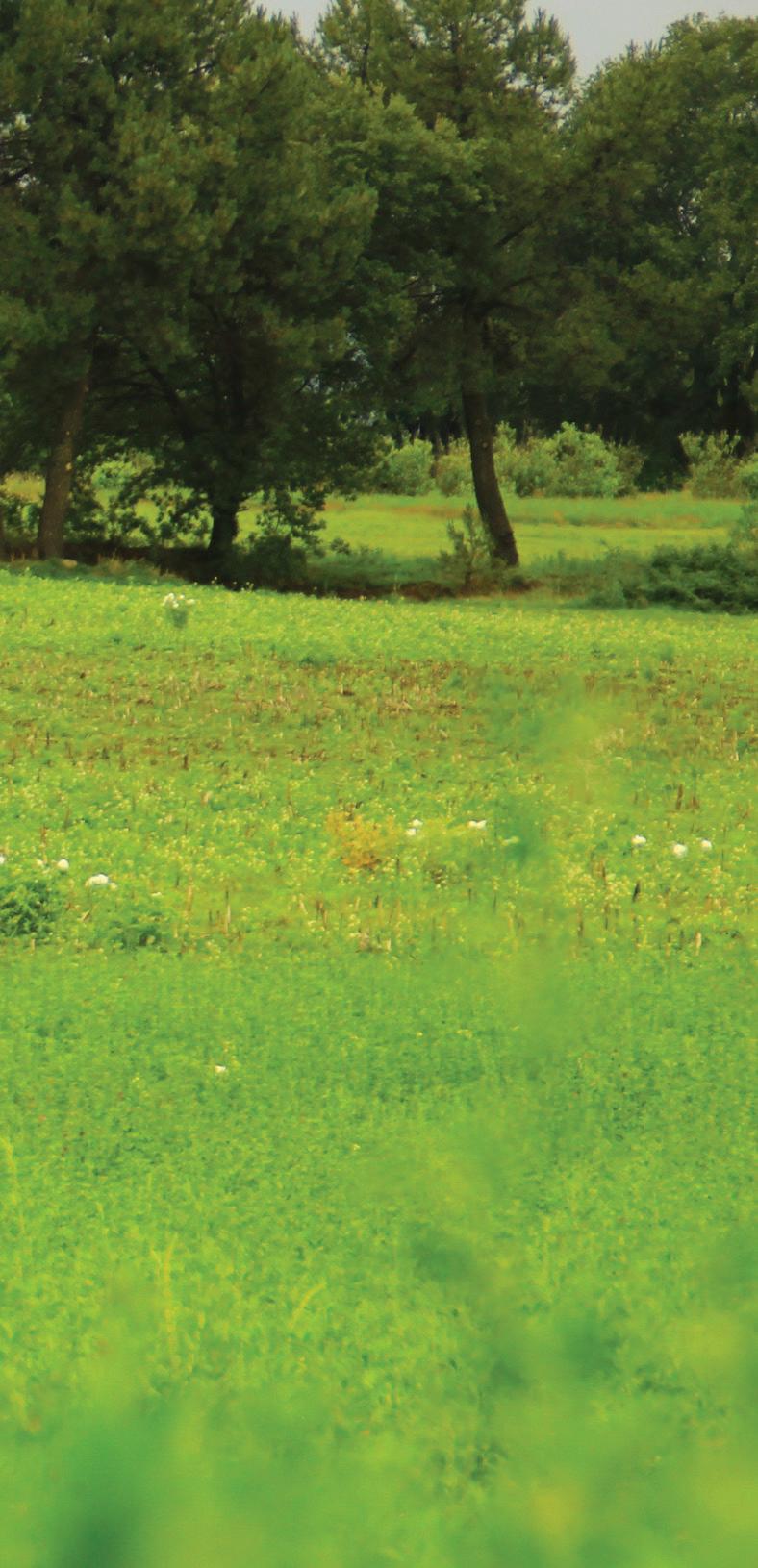

TOP: This photo, taken at a farm outside Monterrey, is reminiscent of Pope Francis’ call for priests to be “shepherds living with the smell of the sheep.” BOTTOM: In the photo titled Francis, Repair My Church, one can imagine the early followers of St. Francis in a similar setting, assisting their leader in rebuilding churches and chapels.

Because of you, we are celebrating 20 years of service in Jamaica!

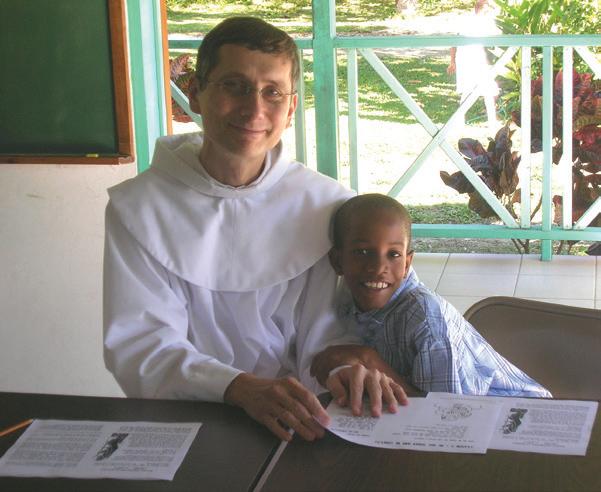


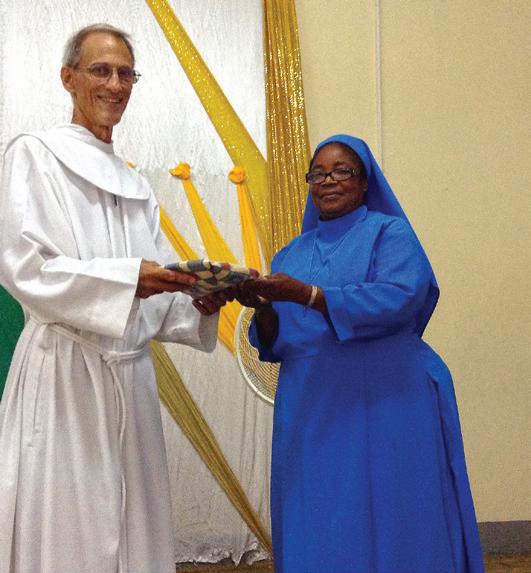



THANK YOU FOR YOUR SUPPORT OF OUR JAMAICAN MISSION THROUGHOUT THE YEARS. FRIARS WHO HAVE SERVED IN JAMAICA: Humbert Moster, OFM • Henry Beck, OFM • Louis Zant, OFM • Mark Gehret, OFM Felix D'Souza, OFM • Joseph Hund, OFM • Joseph Rigali, OFM • Blane Grein, OFM • John J. Gonchar, OFM • Patras Sardar, OFM Vincent Delorenzo, OFM • Christopher Meyer, OFM • Thomas Gerchak, OFM • Kenneth Viegas, OFM • James Bok, OFM Richard Goodin, OFM • Max Langenderfer, OFM • Bernard Bhatti, OFM • Colin King, OFM • Stephen Dupuis, OFM • Saleem Amir, OFM
The Franciscan Friars, Province of St. John the Baptist 1615 Vine St., Ste 1 • Cincinnati, OH 45202-6492 Franciscan.org • StAnthony.org • 513-721-4700, ext. 3219
ASSISI walking through with sts. francis and clare
Pilgrims trace the steps of Francis and Clare on the narrow, cobbled streets of Assisi.

This armchair pilgrimage can bring us closer to important sites in the lives of Francis and Clare of Assisi.
By Patti Normile
The Basilica of St. Clare holds the remains of the saint who followed Francis into a life of holy poverty.
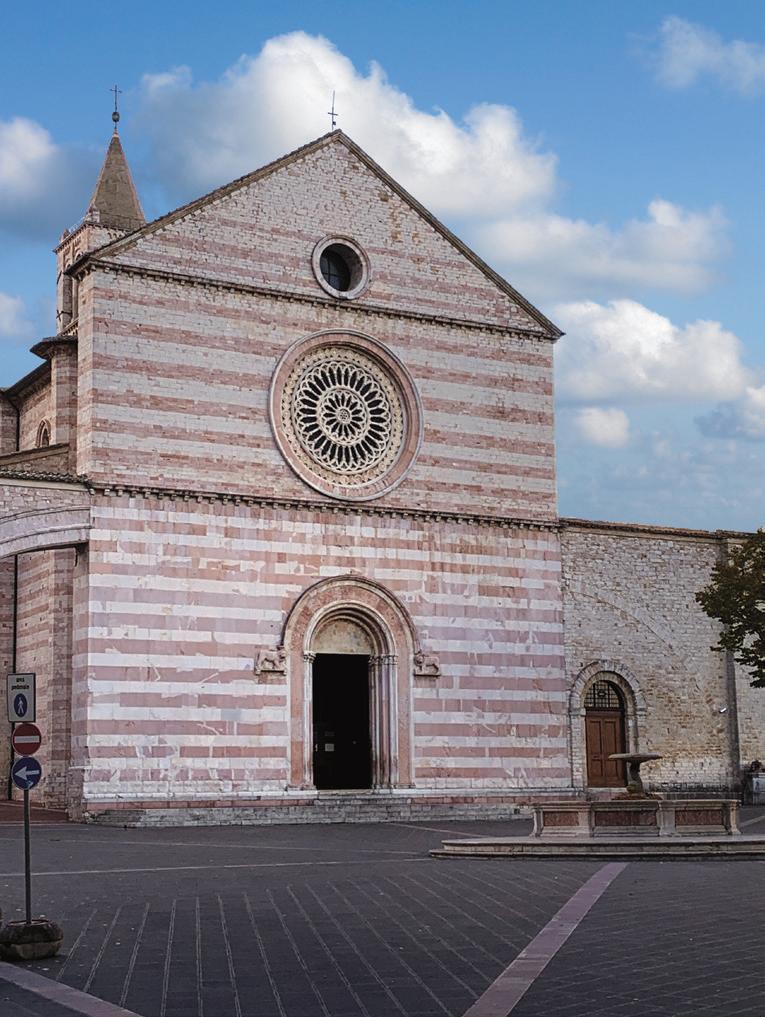

This statue of a war-weary St. Francis on horseback overlooks the basilica in Assisi named after him.
Eight centuries after his death, Francis, the beloved saint of Assisi, still beckons all people to follow his way. He lived in a violent world where Crusades raged, where ordinary people had few rights and fewer possessions. From a warring world, Francis emerged as a champion of peace and nonviolence. Recently, more than 30 individuals from three continents undertook a pilgrimage to Assisi, Italy, dedicated to peace and nonviolence, which explored how the lives of Sts. Francis and Clare might guide lives today in a world where violence, war, and military conflicts affect people globally.
The 2019 Peace and Nonviolence Pilgrimage was sponsored by Pace e Bene in celebration of its 30 years of nonviolent endeavor. Pilgrimage guides were nonviolence advocates Father John Dear and Ken Butigan of DePaul University. The pilgrims prayerfully visited sites in Assisi that influenced St. Francis in his quest to follow Jesus, who proclaimed, “Peace I leave with you; my peace I give to you” (Jn 14:27).
This pilgrimage guide can help readers rediscover the power of nonviolence in a world that trembles in the eddy of turmoil. You are invited to visit these sites in prayer and to ponder questions related to Francis’ time that can bring insights and hope into the 21st century.
SAN DAMIANO: THE CALL
Francesco Bernardone began his life as a wealthy youth of Assisi, probably spoiled
ABOVE: When Francis decided to renounce his possessions, he went to the bishop’s palace. INSET: His trust in God led him to this courtyard, where he presented his clothes to his father, vowing obedience to God alone.
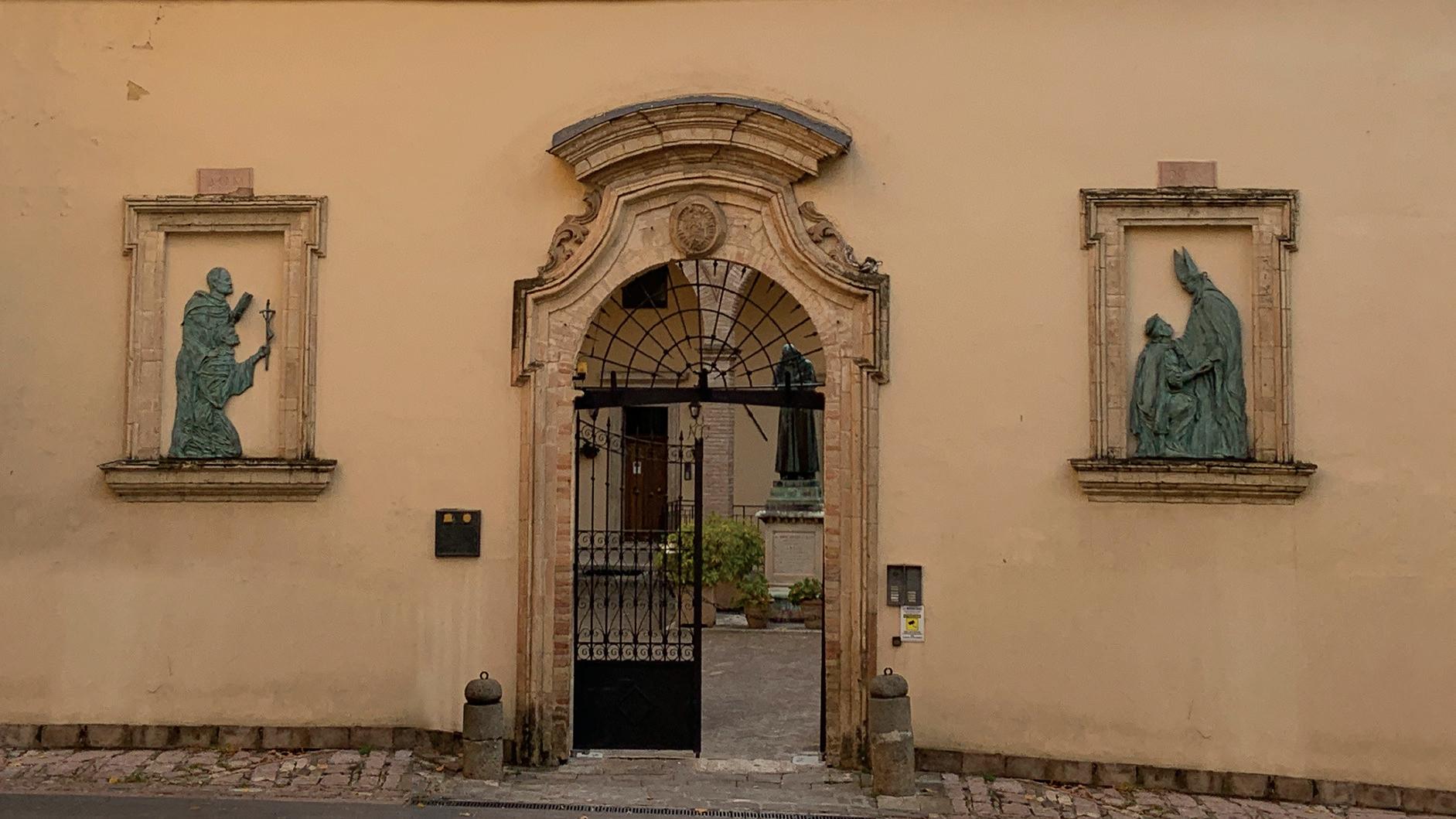

by an adoring mother, affluent father, and a cadre of funloving friends who encouraged him in a frivolous life. That life changed after a foray into war, a period of imprisonment, and poor health. His present life no longer satisfied him.
Then Francis stepped into San Damiano, a little chapel on the plain below Assisi, perhaps to seek comfort on a hot Umbrian day, perhaps to pray. The ornate, life-size crucifix over the altar seemed to speak to him, “Francis, go and repair my house, which is falling into ruin.” A task! Something to do that had meaning! Francis took the message literally. He set about repairing small churches that dotted the area. All well and good, but God’s plan was much larger. Francis was to begin rebuilding the Church that is the body of Christ.
As you sit before a crucifix on this spiritual pilgrimage, listen to what Jesus is calling you to do. To rebuild the small church that is the family? To help resolve issues in your parish church, your community, the nation, the world? To be a peacemaker? Now is the time to create a plan for following Jesus and Francis in a nonviolent life.
CHURCH OF SANTA MARIA MAGGIORE: FREEDOM FROM POSSESSIONS
Francis’ response to his call was dramatic. After repairing local chapels, often with funds “borrowed” from his father, Francis realized he must give away all that he possessed. In a dramatic gesture on the Piazza del Vescovado—the square in front of the bishop’s palace—before the bishop, the town’s mayor and citizens, and his father, Francis disrobed and returned his fine clothing to his father. He declared that from that time forward he would give obeisance only to his Father in heaven.
One can stand today on the very stones where Francis gave away his possessions, trusting only in God to provide for him. What might these stones say to us?
A century ago, many houses were built without closets. People’s clothing fit in modest-sized wardrobes. Today, room-sized closets inhabit homes, and massive storage lockers store excess possessions—winter clothes for those who move south with no intent of return to winter and silver, crystal, and china for those who plan to do no formal entertaining. Advertising belts us with messages of what we must purchase to be happy. We live in a culture of abundance, yet Jesus died with nothing as the soldiers divided his clothes among themselves.
What items do we cling to “just in case” we might need them sometime? Do possessions bring genuine happiness or complicate life as we accumulate and care for them? Consider ways that material possessions can contribute to violence in our 21st-century world.
THE HERMITAGE: A PLACE OF REFUGE
Pilgrimage can be physically and spiritually challenging, as we stretch ourselves into new ways of being and learning. Pilgrimage requires a resting place from time to time. Francis found his in the Hermitage of the Carceri in the hills surrounding Assisi. One niche became his bed, complete with a stone pillow. The Hermitage was a place to which he could retreat when the conflicts of the world assailed him, to pray and gain the right perspective on situations that might have robbed him of his sense of peace.
We each need a hermitage for rest, relaxation, and reshaping our life’s perspective. A bench in a park, a pew in church, a rocking chair on the porch—there is no limit to the possibilities for private hermitages. Peace and quiet are required. Wherever you choose, know that the Lord is near.
Francis taxed his body in many ways. We might even say he did violence to his body by denying himself food and trudging mile after mile to share Jesus’ message. We need to care for ourselves so we can care for others. A hermitage is a place to escape the violence of words and actions that flow too freely in today’s world, a place to nurture body and soul in order to continue the journey to which we are called.
In front of a crucifix in San Damiano, Francis heard God’s call to “go rebuild my house.”
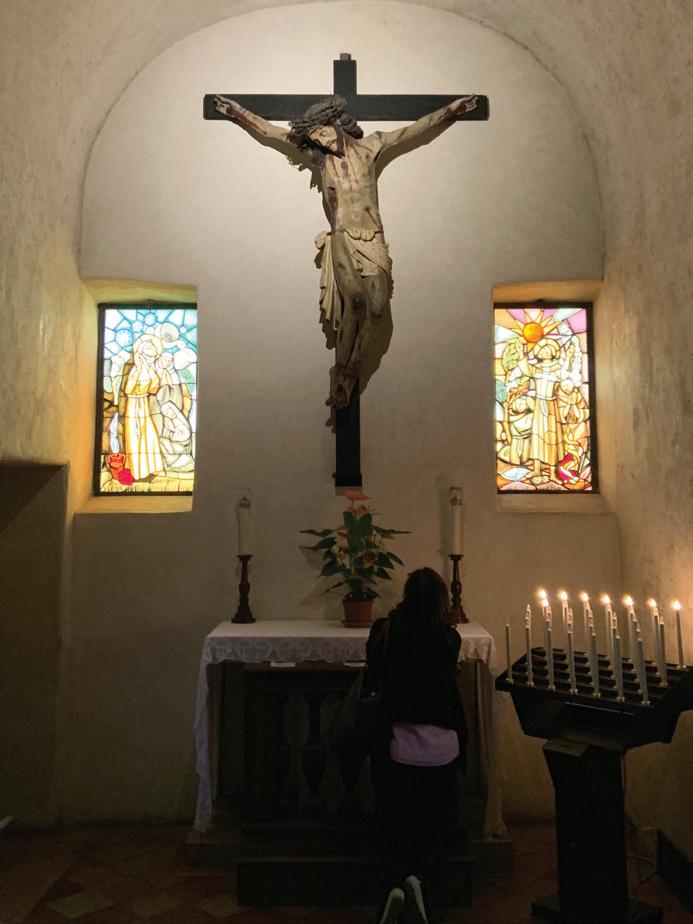
As we prayerfully enter our own hermitage, what tensions and worries can we leave behind? What creative ideas for fostering peace and nonviolence in the world arise in your heart? Think of ways to move from your resting place of prayer into a place of action to create a more nonviolent world.
BASILICA OF SANTA CHIARA: SILENCE REIGNS
St. Clare was a young woman of noble birth in Assisi. Status and wealth were hers for the asking. Instead, she chose to follow Francis into a life of prayer and poverty. Her family was not pleased, though several family members eventually followed her into quiet, prayer, and seclusion. Clare lies in a relatively uncorrupted state in the Basilica of Santa Chiara eight centuries after her death.
One of her final acts was to beg the pope for the privilege of poverty for her followers. Yes, privilege. That privilege affirmed her trust in God to care for all needs. In terms of human activity, Clare did little. She built no churches; she did not preach in town squares. She prayed! And she wrote letters, which in her day was an accomplishment. Letters to her sisters still exist to inspire readers in the 21st century.
Clare’s quiet ministry is a powerful
This outdoor chapel is part of the Hermitage, where Francis came to rest and nurture his soul.
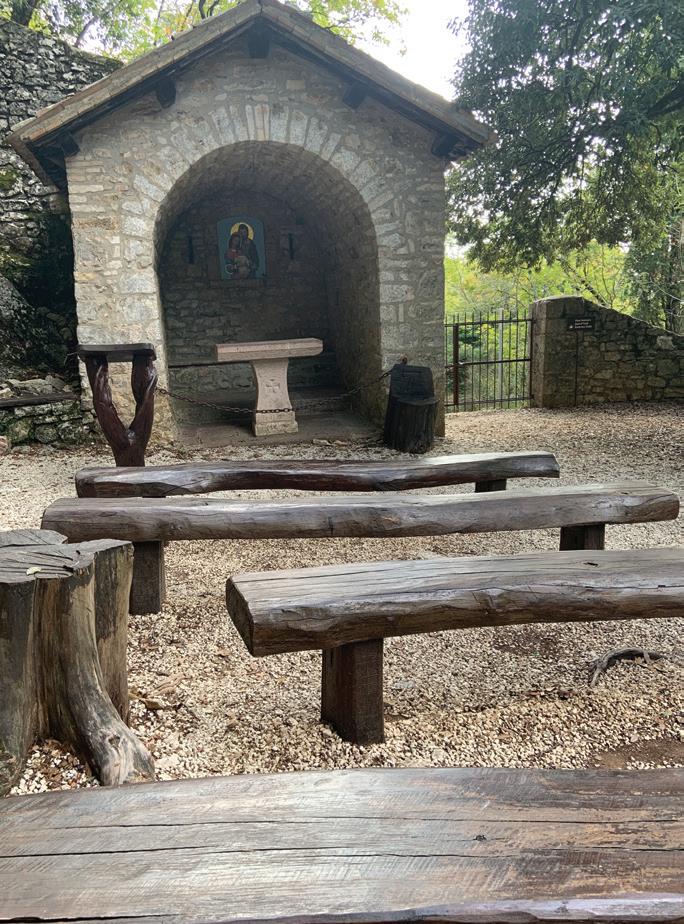

When Francis needed respite from the world, he slept in this cave with a stone for a pillow.
The Basilica of Santa Maria degli Angeli in Assisi was built to protect the small chapel called the Porziuncola, or “Little Portion.” Construction of this magnificent structure took over a century to complete.
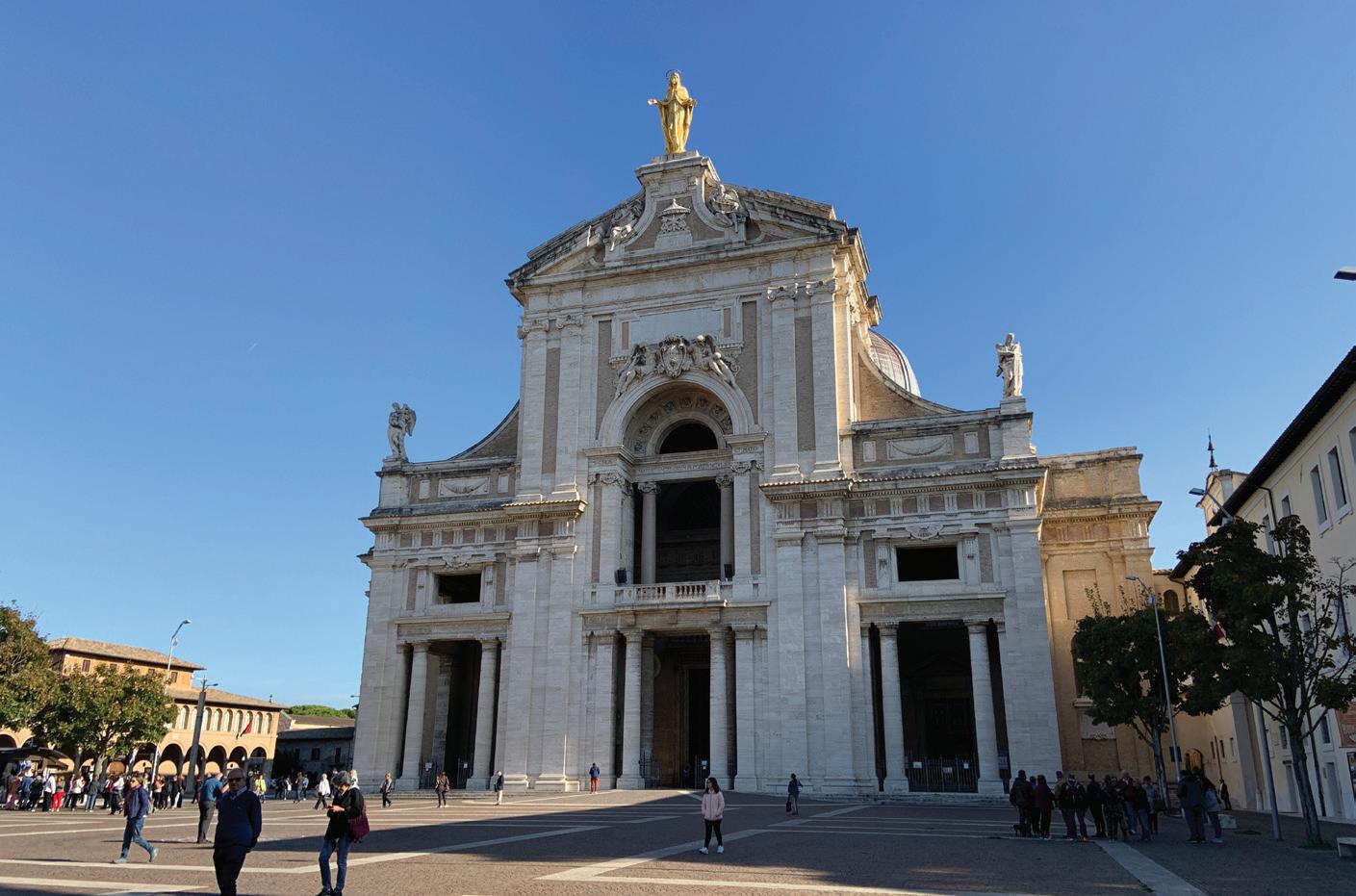
reminder of what is possible from the quiet of home. Prayer is powerful. Words are powerful. Both travel to places feet may not venture. Posts on social media and letters to editors, members of Congress, friends, and relatives inspire others to work for peace and nonviolence. Never underestimate the power of the pen.
Think of someone you might inspire by written messages to consider changes that could make the world a more peaceful planet. Do you have the courage to speak the truth to power in hopes of seeding nonviolence?
BASILICA OF SANTA MARIA DEGLI ANGELI: LITTLE PORTION
The tiny chapel known as the Porziuncola rests within the shelter of a magnificent basilica in Assisi. Porziuncola means “little portion.” That’s what St. Francis of Assisi desired—less, smaller. Throughout his life, he sought to be less, so that Christ would be more. One wonders how the poor Francis, also known as Il Poverello, would view the magnificent structure built in his honor. The basilica was built in order to protect the small chapel from the elements that swept across the
The Porziuncola is one of the churches Francis restored after hearing God’s call.

plain below Assisi.
The faithful of the 21st century are called to protect the values inherent in that little portion. Those values can be protected by choices we make in daily living as we speak truth, guard the rights of little ones, feed the poor, care for the sick, and seek peace. We, who live in a world of enormous need, can make a difference. A pilgrimage for peace and nonviolence calls us to this world-changing mission.
In your life, how have you gone forth to make peace? Do you proclaim the value of nonviolence? Look for ways to proclaim the peacemaking endeavors of Jesus, Francis, and Clare in a world that seems to honor hostility and war.
BASILICA OF ST. FRANCIS: FINAL REST
The people of Francis’ day in the early 13th century recognized that a saint lived among them. The Basilica of St. Francis that clings to the mountainous slope was constructed in two years following his death. Today the body of the saint lies entombed in an austere block
Francis is buried in this tomb inside the basilica that bears his name. Eight centuries after his death, Francis continues to inspire us to follow his way of peace and nonviolence.

The Basilica of St. Francis was constructed within two years of the saint’s death.

A striking rose window rises over the entrance to the middle area of the Basilica of St. Francis.

of stone bound by an iron rope. His resting place is a spiritual haven possessing what might be called a magnetic grasp on those who gather there for prayer and to pay reverence. St. Francis of Assisi lives in the hearts of the faithful while his way of following Jesus endures. Our call is to preserve the mission.
Is Jesus calling you through the life of St. Francis to be a peacemaker? How will you respond? If you have heard this call before, how can you renew your commitment to peacemaking and nonviolence for the rest of your life? Consider inviting someone to join you on your pilgrimage.
THE JOURNEY CONTINUES
Pilgrimage is a search for a new place of being, a journey into new life, a quest for values beyond what today’s culture offers. It can be a journey through the mind, heart, and spirit. Most pilgrimages do not end, but continually invite the pilgrims to seek deeper meaning. The challenge is to continue it throughout life.
Life itself is a pilgrimage, but sacrifice is required. The faith of childhood will be called to grow into adult faith. Where will God put us to work for peace and nonviolence in the way of Sts. Francis and Clare of Assisi?
Patti Normile is a Secular Franciscan, retired teacher, and hospital chaplain who resides in Terrace Park, Ohio. A wife, mother, and grandmother, she is the author of several books and has written numerous articles for St. Anthony Messenger. SINCE ITS FOUNDING IN 1989 by the Franciscan Friars of California, Pace e Bene (PaceeBene.org) has promoted active nonviolence throughout the world. The Italian phrase, meaning “peace and all good,” was used by Sts. Francis and Clare and is still used by Franciscans today.
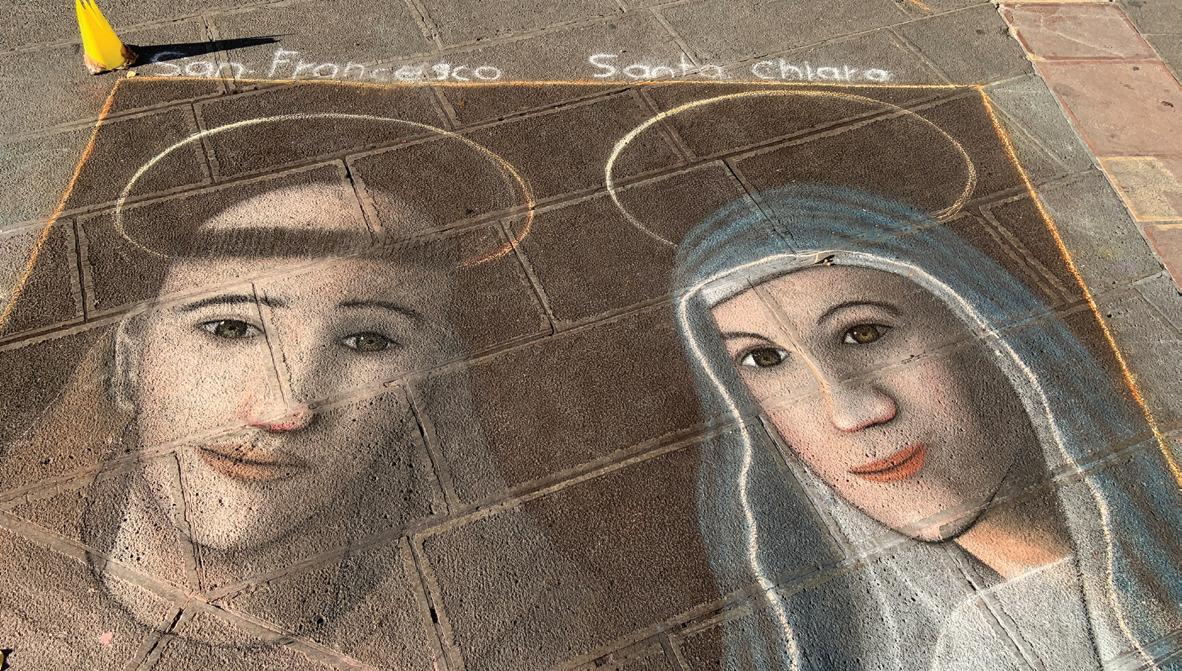
Its long-term project, Campaign Nonviolence, began in 2014 and promotes active nonviolence by “connecting the dots by working to end war, poverty, racism, and environmental destruction,” according to the website. The organization’s annual Action Week took place September 19–27, 2020, with activities in all 50 states and worldwide. Visit CampaignNonviolence.org for more information.
Secure Your Future with a Gift Annuity through the Society of the Little Flower.
CALL US TO REQUEST A FREE PROPOSAL 1-888-996-1212 littleflower.org/specialgifts


• A $10,000 charitable gift annuity provides an 80-year-old individual with annual payments of $930 • Little Flower gift annuities provide fixed payments for life • Payments are primarily tax-free through life expectancy
Your gift helps those in need through Carmelite ministries and the education of seminarians
Sample One Life Rates*
8.1% 9.3% 11%
13.8%
Age
75 80 85 90 *Rates are subject to change • Minimum age 60 • For U.S. residents only Please call our office to learn the rates for ages 60 - 74 and for two-life gift annuities.
Society of the Little Flower •1313 N. Frontage Rd. • Darien, IL • 60561
Police & Suicide A Hidden Epidemic
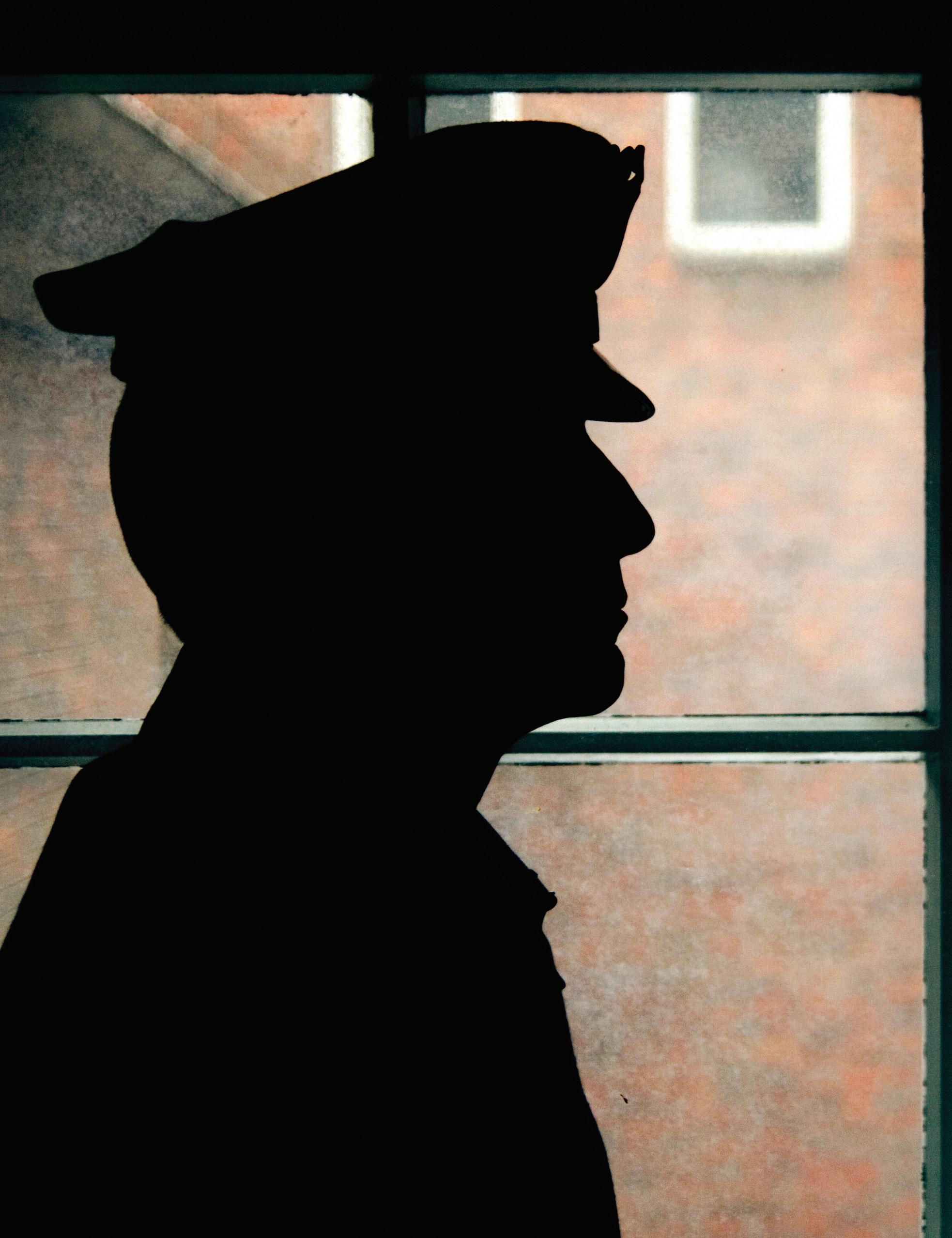
Police officers are more likely to die by suicide than be killed by criminals. A retired Catholic Charities executive and others are working to change that.
KLUBOVY/ISTOCK Brian Cahill has never been a cop, but burnished in his psyche is a troubling slice of data about police officers.
No matter how tough the city or how crime-ridden a neighborhood, psychological risks are more likely to bring down a cop than the most hardened criminals, says Cahill, retired executive director of Catholic Charities in San Francisco.
The fact is, more police officers kill themselves than are killed by criminals. In the first 10 months of 2019, 188 police officers across the nation died by suicide. Two years before, 140 police officers killed themselves, while 129 died in the line of duty.
Particular police work and certain cities have been suicide hot spots. In New York City in the first 10 months of 2019, 10 police officers took their lives. Six in a similar time period killed themselves in Chicago. The rate is even higher among corrections and border patrol officers.
A MISSION BORN OF PERSONAL TRAGEDY
Cahill is a veteran of social service leadership, but he comes to the issue with more than a professional stake. In 2008, just days after his retirement party, he got word that his son, John, a San Jose, California, police officer, 42 years old and the father of two, killed himself.
“I’m just the father of a cop who lost his way,” says Cahill. Like many other family survivors, he has taken it upon himself to make something good come out of personal tragedy. He has studied the issue and spends time in police departments around California and the country, warning police officers and their supervisors to be wary of signs of despair among fellow cops.
“You guys have to train for the hidden risks,” Cahill, a frequent suicideprevention lecturer for police audiences, often tells them.
For the past eight years, he has tried to shed light upon those risks by making suicide prevention among cops a mission. Cahill speaks regularly to officers in San Francisco and San Jose, and he wrote a book in 2018 about his son’s death, titled Cops, Cons, and Grace: A Father’s Journey Through His Son’s Suicide. His work with Catholic Charities gave him the background and skills to immerse himself in a sensitive issue. “I do think that as a social worker all my life, once I started to climb out of my initial grief and pain, it was a logical and natural inclination to look to how I could help other cops and their families avoid what happened to my son,” he says.
San Francisco police are required to take 40 hours of ongoing education every two years. Cahill gets a half hour of that time to spread his message of the need for self-healing as well as signs to watch out for among colleagues. His theory, and that of others in the field, is that just as it takes a village to raise a child, it takes an involved community to watch out for the mental health of police officers. The model of the lone cop fighting through personal demons doesn’t work.
Theories abound as to why police officers are vulnerable to suicide. Some point to their access to guns; however, others note that often the method of killing does not involve a firearm.
Cahill sees the psychology of a police officer as a major factor.
“They are used to bringing control out of chaos,” he says, noting that they are often the first on the scene of a crime or a tragic accident. When that ability to control personal problems—such as drinking, money problems, or a marriage
conflict—begins to slip, cops the San Francisco Police become vulnerable. Department who have
Another factor is the taci- experienced combat and who turn culture of police depart- have served as officers tell ments, especially suspicion him that the pressure is often that those outside the blue more intense in police work, wall cannot fully compre- that the exposure to trauma hend the strains of the work. is even more intense.
Police are often reluctant What develops, says to ask for help, says Cahill, Howard, is a “hypervigilant noting that there is a credo stance that officers get into among many officers that by being on guard all the doing so is a sign of weak- time.” ness. In some departments, The go-it-alone attitude is admitting to mental ill- beginning to crack as departness or addiction can mean ments across the country squandering a chance for John Cahill, a father of two, served as a motorcycle officer in San Jose, California, promote mental health promotion or being assigned until his death in 2008. initiatives. to restricted duties. One of his goals, says
But police departments across the country are beginning Howard, is to encourage officers to look out for themselves to change, trying to encourage officers to seek help when as well as their fellow officers. The goal is to encourage them needed. to seek therapy, to promote a culture that can overcome the
One such department is San Francisco, where Art Howard stigma attached to seeking help. The department trains 300 has risen to the rank of sergeant over an 18-year career. He is officers in peer support, helping them learn to identify warnnow part of the department’s employee assistance program. ing signs. “Everything we’re doing is suicide prevention,” says
“Suicide is killing more cops than bad guys [are],” he Howard. says, talking to a reporter on a rare day off. He echoes Cahill, That approach is now more common across the country. whom he has worked with on employee assistance programs, Chicago police officer Cindy Phillips began a program when it comes to analyzing the whys of police suicide. “In she calls STAR (Suicide Trauma and Recovery), intended to law enforcement, we take control of situations,” he says. bring police officers together to talk out personal issues. It’s a “That’s part of our job. When we feel out of control, we feel program she would like to extend around the country. depressed.” Phillips, a 19-year police veteran, began STAR after her
A common issue among police officers is alcoholism, 17-year-old daughter Emily killed herself. Emerging from often aggravated by post-traumatic stress disorder, much her own grief, she wanted to help others. The issue of suicide like veterans who have been through war. In the jargon of among her police colleagues was obvious to her. therapy, too many stressed police officers are self-medicating The goal of STAR is to get officers to talk about issues via drinking and other drugs. without fear of stigma. A LIFETIME’S TRAUMA IN ONE DAY cers,” she says. STAR brings together cops to share personal Experts on police mental health note that the nature of the and emotional concerns. job creates special challenges. For most people, a violent The group sessions are not intended as professional event may happen once or twice in their lives. For many vet- therapy. “But at least if you are talking, you are getting a foot eran officers, simply going to work may result in an encoun- in the door,” says Phillips. The idea is to present a friendly ter that could prove traumatic. community for troubled officers, who can still perceive even
A study by the Ruderman Family Foundation noted that the most well-intentioned official channels as obstacles. a typical police officer encounters 188 critical incidents in Phillips believes that talking about her own struggle can a career, traumatic events such as the beating of a child, a help others. Her work is geared not only to police officers but deadly car accident, or seeing a corpse. also to the families, like hers, that have suffered the trauma
The nature of police work is not normal, says Howard. of suicide. Exposure to violence and accidents, sometimes resulting “Every single person I meet, I will tell them Emily’s story. in death, is part of a police officer’s work. “That could be It opens up a taboo subject,” she says. a Monday for us,” he says, noting cops’ repeated exposure “Police officers will tend to open up to other police offito trauma can create adrenaline rushes that are hard to get COP-CHAPLAIN: ‘ONE IS TOO MANY’ down from. Robert Montelongo, another Chicago police officer, sup-
Howard notes that some military veterans working for ports Phillips’ efforts. Suicide prevention is a team effort that

has to involve everyone, overcome, much like a physical including cops who are illness. not personally affected but Prevention is accomplished can see the issue emerging through supportive environin the lives of their fellow ments for all. officers, he says. “The greatest thing we
Montelongo, 22 years can do is to get people to talk a cop, is also a deacon for to us,” he says. Montelongo the Archdiocese of Chicago spent many years on the street, and now serves as a police including a stint on bicycle chaplain. Because of the patrol. It helps his credibility size of the department, he to have a vocation as both a has seen a number of sui- Catholic cleric and a police cides among fellow officers. officer.
“One is just too many,” “I’ve done what they’ve says Montelongo, noting done. It means a lot. They’ll that he is sometimes one of use police lingo that I will the first on the scene and is understand,” he says, someexpected to offer consola- thing a civilian would have tion to both fellow cops trouble comprehending. and families. He has knelt (From left) Chaplain Bob Montelongo, a deacon and a cop, stands with Officer Jason For example, cops at the over and blessed the bodies Font and Father Dan Brandt outside Guaranteed Rate Field in Chicago. scene of great tragedies often of suicide cop victims. maintain a cool demeanor,
Why are cops vulnerable? He points to the nature of the appearing to the outsider as oblivious to the carnage that job. Every day, cops deal with the worst days that others surrounds them. They may use language that can seem experience. It can be wearing. insensitive, for example, referring to a corpse as a “stiff.” But
“You see the horrible things that happen in the world,” he Montelongo knows it is part of the job, a way to rise above says. Police are on the front lines of social disorder, especially exposure to horror. in a city like Chicago, which has one of the nation’s highest The civilian world can help by providing emotional and murder rates. spiritual support for cops, he says. At St. Gabriel Church
Montelongo wears three uniforms on the job: civilian in the Canaryville neighborhood of Chicago, parishioners office attire, a police uniform, and the clericals of a deacon. regularly pray the rosary for police officers. It is a quiet act, These roles have much in common, says Montelongo, who but appreciated. compares being a police officer to a religious calling. “We are “We need to have that,” says Montelongo, who notes that called to a vocation to go out and help others, to put it on officers feel the sting of volatile opposition to the police, your shoulders. It’s the call of a police officer.” which has at times been a part of life in Chicago and other
In many ways, his work with survivors of cop suicide major cities. is a ministry of presence. There are no preplanned magic In many police departments, there is a long tradition of words. When responding to such a call, Montelongo will pull Catholic involvement. over and say a prayer that he can bring the healing of the For survivors, faith in a loving God is one way to move Holy Spirit to the scene, whether on the job or at the police toward acceptance of a tragedy and healing, says Phillips, officer’s home. a member of St. Barbara Parish in Chicago. “I can’t change
For Catholics, religious concerns often emerge when deal- it,” she says of her experience with her daughter. “I give it to ing with the suicide of a fellow officer or family member. God and let him take care of it.”
Some Catholic police families find little solace in their For Cahill, urging police officers to seek help is one way religion, which once condemned the act of suicide as con- he works through the issues surrounding his son’s death. He trary to God’s law. But in more recent times pastoral leaders also receives spiritual direction from an 85-year-old Jesuit emphasize that no one in this world can judge the culpability priest, whom he respects for his wisdom and counsel. In his of a suffering victim. The Catechism of the Catholic Church book, he describes hearing his son’s voice on occasion. states, “Grave psychological disturbances, anguish, or grave He quotes the spiritual writer Father Ron Rolheiser that fear of hardship, suffering, or torture can diminish the God’s love, unlike ours, can go through locked doors, a responsibility of the one committing suicide” (2282). thought that offers him solace.
Montelongo communicates to grieving families and friends that their loved one suffered from an illness, like Peter Feuerherd is the news editor of the National Catholic Reporter and teaches those who die from cancer. It is a battle that could not be journalism at St. John’s University. He lives in Queens, New York.

Striving for Grace
by Richard Rohr, OFM
Among the most powerful of human experiences is to give or to receive forgiveness. I am told that two-thirds of the teaching of Jesus is directly or indirectly about this mystery of forgiveness: God’s breaking of God’s own rules. That’s not surprising because forgiveness is probably the only human action that reveals three goodnesses simultaneously!
When we forgive, we choose the goodness of the other over their faults, we experience God’s goodness flowing through ourselves, and we also experience our own goodness in a way that surprises us. That is an awesome coming together of power, both human and divine.
If we don’t get forgiveness, we’re missing the whole mystery. We are still living in a world of meritocracy, of quidpro-quo thinking, of performance and behavior that earns an award. Forgiveness is the great thawing of all logic, reason, and worthiness. It is a melting into the mystery of God as unearned love, unmerited grace, the humility and powerlessness of a Divine Lover.
Forgiveness is the beginning, the middle, and the end of the whole Gospel, as far as I can see. Without radical and rule-breaking forgiveness—received and given—there will be no reconstruction of anything. It alone breaks down our damnable worldview of trying to buy and sell grace. Grace is certainly the one gift that must always be free, perfectly free, in order for it to work. Without forgiveness, there will be no future. We have hurt one another in too many historically documented and remembered ways. The only way out of the present justified hatreds of the world is grace.
WHAT IS BEHIND HATE?
Hate, though, is unfortunately here to stay. Hate can be helpful to certain causes. It unites a group quickly, it gives a person identity—even if it is a negative one—and, most of all, it takes away doubt and all free-floating anxiety. It gives us a place to stand that feels superior and in control. Hate settles the dust and ambiguity that none of us like. Hate is much more common, and more immediately effective, than love. Hate, as we will sadly see below, makes the world go ’round.
We could say, in fact, that Jesus came to resolve the central and essential problem of hate. There is no other way to save us from ourselves, to save us from one another and, therefore, to “save us,” unless we are saved from our need to hate. We have produced so much utopian talk about Jesus and love, but Jesus had a very hard time getting to the issue of love. First, he had to expose and destroy the phenomenon of hate. Once he exposed the lie and illusion of hate, love could show itself clearly—and it did.
The pattern is still, unfortunately, the same. As Jesus shockingly put it, Satan is “the ruler of this world” (Jn 12:31). Hate, it seems, is the ordinary, daily agenda. Love is the totally enlightened, entirely nonsensical way out of the ordinary agenda. The Gospel presents the dilemma in a personal and cathartic narrative that grounds the whole issue in history and in one man’s enlightened response to our history. Jesus accepts the religious and social judgment of hate and bears the consequences publicly, but in an utterly new way that transforms the pattern and the possibilities.

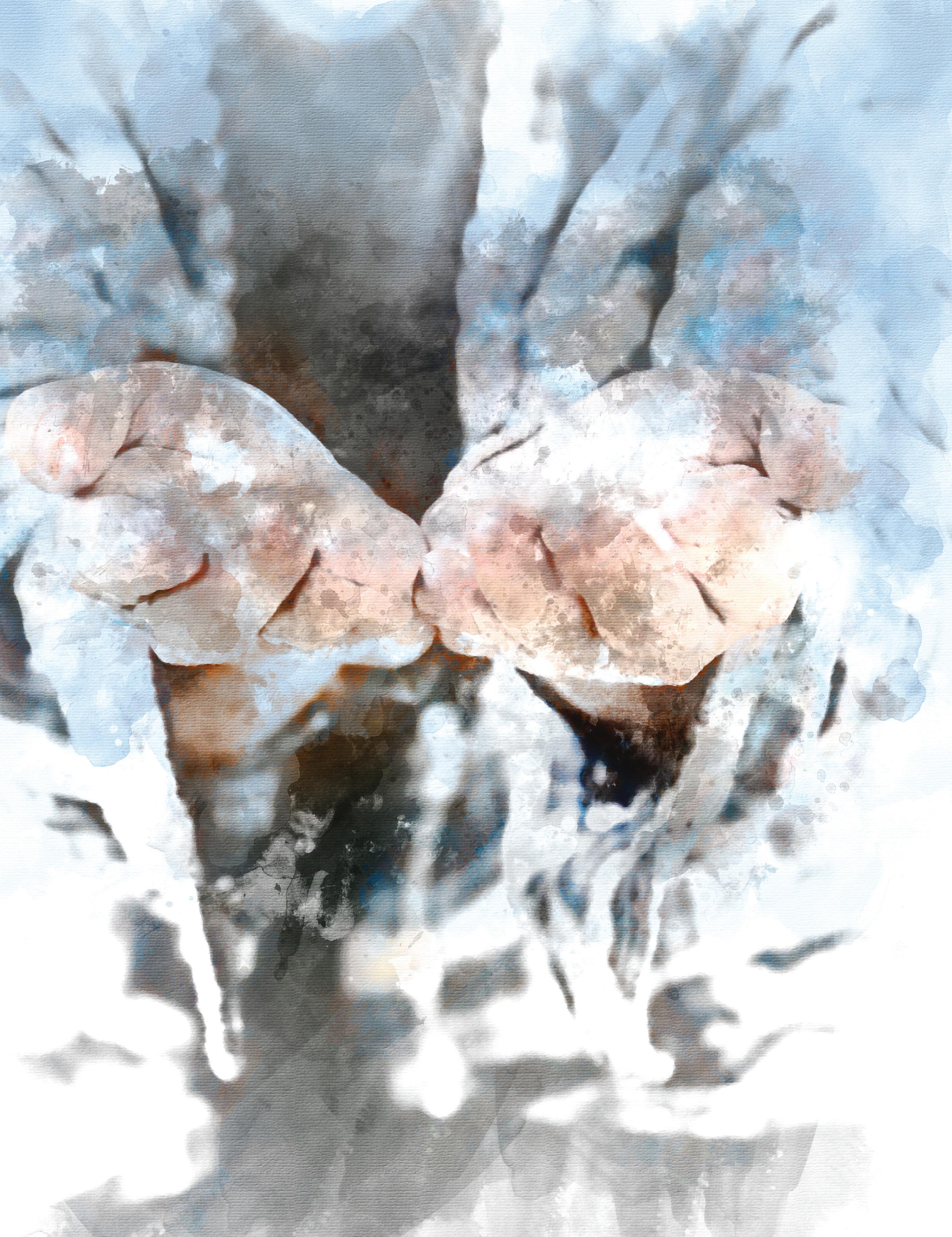
For 2,000 years, he has remained the most striking icon of a possible new agenda. His death exposed the lie and the problem like never before. His risen life tells people their lives could have a different story line. He did not only give us textbook answers from a distance, but also personally walked through the process and said, “Follow me.”
I believe that fear is almost always behind hate. Sometimes it looks like control, but even control freaks are usually afraid of losing something. It is almost always fear that justifies hatred, but a fear that is hardly ever recognized as such. “And now wonder, for even Satan masquerades as an angel of light” (2 Cor 11:14). The best and most convincing disguise for fear is virtue itself, or godliness. Then it never looks like fear.
For fear to survive, it must look like reason, prudence, common sense, intelligence, the need for social order, morality, religion, obedience, justice, or even spirituality. It always works. What better way to veil vengeance than to call it justice? What better way to cover greed than to call it responsible stewardship? Only people who have moved beyond ego and the controlling of all outcomes, only those practiced at letting go, see fear for the impostor that it is. To be trapped inside of our small ego is always to be afraid.
To not have anyone that we can trust is necessarily to be a control freak. Thus, great religion tries its best to free individuals from the tyranny of their small and fragile selves. It always points toward a larger identity that we call the Godself, the True Self, the self “hidden with Christ in God” (Colossians 3:3), the trustworthy Lover. Healthy and true religion, like Jesus himself modeled, tells us that there is Someone we can trust. We do not have to create all the patterns or fix all the failures. What else would be the beginnings of peace?
If the small ego is not transformed, one other pattern is inevitable. The fear is too destabilizing and unsettling for the small self to bear alone, so it must either be denied or projected elsewhere. The process of both denying and projecting our fears and hatreds is called “scapegoating,” from the Jewish ritual of putting our faults on a goat that was whipped out into the desert (see Leviticus 16).
The object of our wrath, like the poor “escaping goat,” is completely arbitrary and artificial. It has nothing to do with truth or reason. It has to do with fear. With a scapegoat, a plausible and much-needed projection screen will always be found for our little drama.
The amazing thing is how well it works. We rather easily displace our fears onto other people, other issues, other places, and other times. Anything seems better to us than bearing the burden of my-fear-here-now-myself. Only the Great Self can carry such anxiety, such ambiguity, such essential insecurity. It is simply much too much for the small self to carry.
So, we are stuck with ever new brands of hate. Some have said that the best we have been able to do in the last 60 years is to move hatred to ever higher forms of sophistication and ever more subtle forms of disguise. We still love to hate: Feminists can hate men, liberals can hate conservatives, activists can hate rich people, good-family-values folks can hate homosexuals, and victims can hate perpetrators. We just change the vocabulary to make it sound well-considered.
This twice-distilled hate is now legitimate, necessary, deserved, and very well disguised! Jesus would call it “driving out the devil by the prince of devils” (see Luke 11:14–23), hating supposed evil and becoming hatred ourselves—but now even more well-hidden from ourselves and difficult to expose. Now we hate under the banner of God, goodness,

Great religion tries its best to free individuals from the tyranny of their small and fragile selves. . . . Healthy and true religion, like Jesus himself modeled, tells us that there is Someone we can trust.
and political correctness. This is the prince of devils, for sure, a devil almost impossible to drive out.
Paul the Pharisee had to be thrown to the ground and the scales had to painfully fall from his eyes for him to recognize that, in the name of his religion, he had become hate, and even a mass murderer. The cock had to crow several times before the first pope, Peter, could recognize that he was doing the very thing he said he would never do. Yet these are the two figures that stand in front of the largest church in Christendom—as the two pillars of the Roman Church. They were not saints by later, pious definitions. Instead, they were transformed examples of hatred and fear. This is not the rare exception, but the norm and the pattern.
It seems there is something we know by losing and finding that we never would have known by simply being safe and sweet. The greatest lovers are not uncommonly the same people who once hated and feared. Virtue is not only willpower, but also actually vice overcome.
Both René Girard and Gil Bailie have taught us that the most effective and common way to turn social hatred into social harmony is via a scapegoat. It works so well, it gathers the community so quickly, that it has endured through most of human history. Now it is the normal story line, so normal that we hardly see it. It remains denied, invisible, and unnoticed.
‘SACRED’ VIOLENCE
Carl Jung saw the same pattern in the individual that Girard sees in society and culture: That which we fear, deny, and avoid will, with 100 percent certainty, be projected somewhere else. In other words, there is an intrinsic connection between fear, hatred, and violence. Furthermore, we will do it with impunity and even grandiosity. It is the sacralization of violence and the most common form of violence. That way, we can be hateful and not feel the least bit guilty about it—but, in fact, feel morally superior!
The process of creating sacred violence is so effective that it is now in the “hard wiring” of human personality. As Aquinas noted, no one intentionally does evil. They have to explain it to themselves as good! I am sad to say that, historically, religion is the most effective proponent of hatred and fear, and therefore violence.
Sacred violence is the most common kind of violence. How strange that we could ever arrive at this place after Jesus said that he came for “the forgiveness of sin” (Mt 26:28) and to share the perfect love that casts out all fear! It’s no surprise that Jesus has to spend a great part of his ministry in an effort to reform religion itself. Religion is, ironically, the safest place to hide from God! In its healthy forms, it is also the place to find God. As the Latin saying goes, corruptio optimi pessima (the corruption of the best is the worst of all).
We see the classic pattern already in Adam’s treatment of Eve and Cain’s killing of Abel. It is the original lie and has continued nonstop until now. It is called history: largely a
One solution for oxygen at home, away, and for travel
Introducing the INOGEN ONE It’s oxygen therapy on your terms

No more tanks to re ll. No more deliveries. No more hassles with travel. The INOGEN ONE portable oxygen concentrator is designed to provide unparalleled freedom for oxygen therapy users. It’s small, lightweight, clinically proven for stationary and portable use, during the day and at night, and can go virtually
anywhere — even on
most airlines. Inogen accepts Medicare and many private insurances!
Reclaim Your Freedom And Independence NOW!
Call Inogen Today To Request Your FREE Info Kit


1-855-765-2954
record of who kills, imprisons, tortures, oppresses, controls, Girard says that the Christian West was the most destabienslaves, rapes, occupies, or exploits whom. It’s really quite lized by the virus of the Gospel, then moved into overdrive disappointing, once we see it. Then, the utterly predictable to cover its fear and its need to hate, despite the orders from response is revenge or retribution. The old and only story its designated God. The central teaching of Jesus on love of line continues unabated. It never stops. At this point, it is enemies, forgiveness, and care for those at the bottom was getting quite boring. We need a new plot, beyond “get the supposed to make scapegoating virtually impossible and bad guys.” unthinkable.
It is only the mystics and seers in all of the great religions Scapegoating depends upon a rather sophisticated, who give us a genuinely new story: redemptive suffering but easily learned, ability to compartmentalize, to sepainstead of redemptive violence. Socrates, Jesus, the Mother of rate, to divide the world into the pure and the impure. the Maccabees, Buddha, Harriet Tubman, Gandhi, and Óscar Anthropologically, all religion begins with the creation of Romero—these give us a genuinely new story line. These few the “impure,” and very soon an entire moral system emerges, are the true history-makers, who expose the self-serving lie with taboos, punishments, fears, guilts, and even a priestof hatred and open a way through for the rest of us. All others are only delaying the resurrection of humanity.
Resurrection will be taken care of for us, as quietly as a silent Sunday morning, once the lie of “Good” Friday It is only the has been exposed and thereby under- mystics and cut. Once Jesus put all his effort and seers in all of the energy into that Friday, God took care great religions of Sunday easily. But, as the Gospel who give us a texts say, “suddenly there was a violent earthquake . . . [and] the guards were . . . like dead men” (Mt 28:2, 4). The genuinely new story: redemptive game of smoke and mirrors was over— suffering instead for good—but there is a continuing of redemptive seismic shift toward the imperial violence. system.
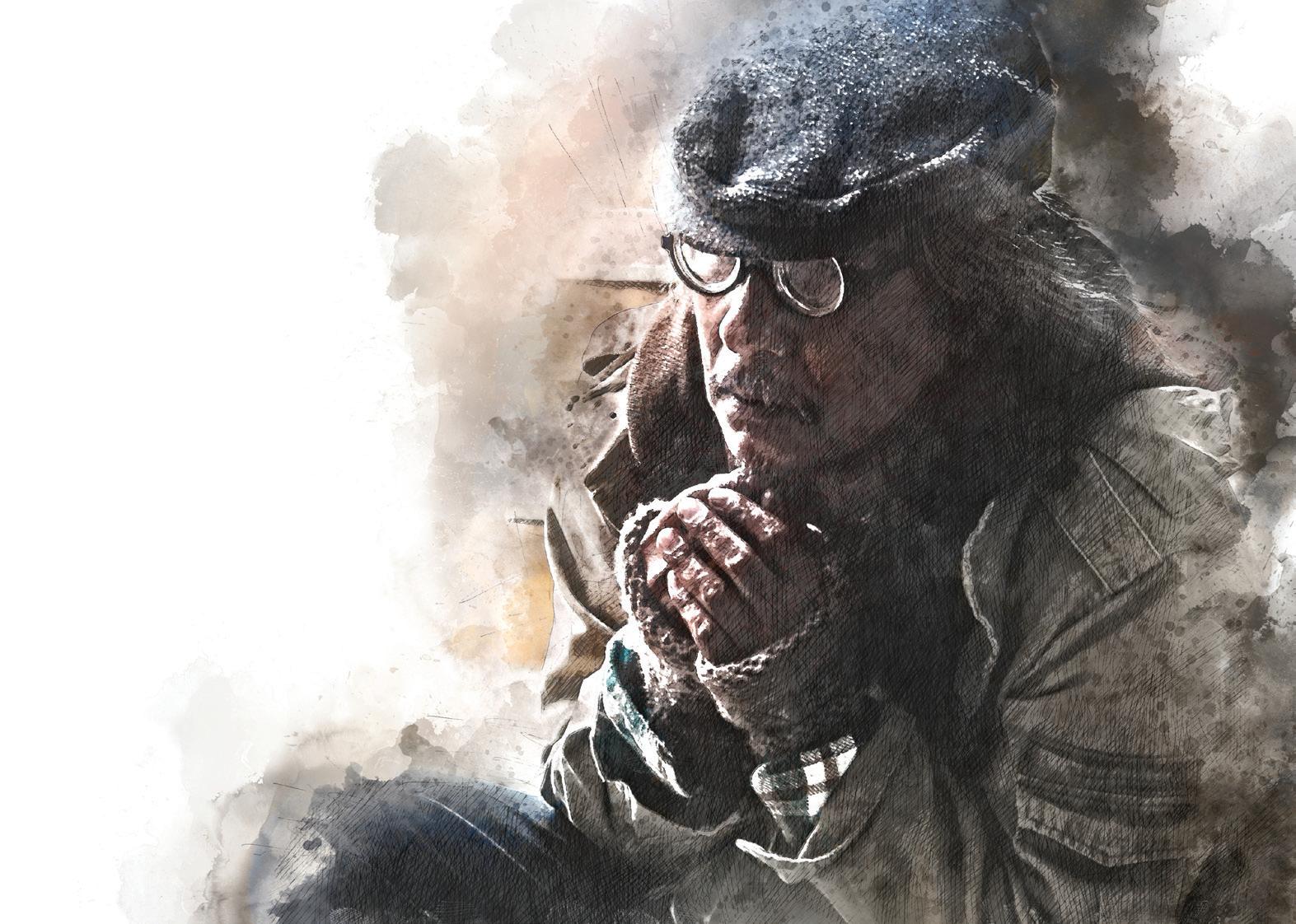
LOVE, INFECTIOUS AND FREE
As a Christian, I do believe that Jesus’ death was a historical breakthrough, and it is no accident that Christians date history around his life. Afterward, we could never quite see things in the same way. The “virus” of the Gospel was forever released into human history, archetypally pictured as blood flowing from the crucified. It was only a minority of Christians who ever got the point, however. Still, the toothpaste cannot be put back into the tube; the movement of grace cannot be reversed.
Most Christians, with utter irony, worshipped Jesus the Scapegoat on Sundays and, on the other six days of the week, made scapegoats of Jews, Muslims, other Christian denominations, heretics, sinners, pagans, the poor, and almost anybody who was not like themselves. One would have thought that Christians who “gazed upon the one they had pierced” (Jn 19:37) would have gotten the message about how wrong domination, power, and hatred can be. The system had been utterly wrong about their own, chosen God figure, yet they continued to trust the system. I guess they did not gaze long enough.
Many followers of other religions seem to have been infected by the virus more than most nominal Christians. hood to enforce it. It gives us a sense of order, control, and superiority, which is exactly what the ego wants and the small self demands. But, before you start hating historical religions too much, think about red meat, patriarchy, bourgeois values, all institutions, sexist language, and even Christianity itself. These have become the new “impure” contaminants. (Remember, it only gets more sophisticated and justified!)
The absolute religious genius of Jesus is that he utterly refuses all debt codes, purity codes, religious quarantines, and the searching for sinners. He refuses the very starting point of historic religion. He refuses to divide the world into the pure and the impure, much to the chagrin of almost everybody—then and now.
Jesus is shockingly not upset with sinners. This is a shock so total that most Christians, to this day, refuse to see it. He is only upset with people who do not think they are sinners: These denying, fearful, and illusory ones are the blockage. They are much more likely to hate and feel no compunc-
tion. Formerly, religion thought its mission was to expel sin and evil from River City. Through Jesus, we learn that sin lies in the very act of expelling. There is no place to expel it to. We have met the enemy, and the enemy is us. We either carry and transform the evil of human history as our own problem, or we only increase its efficiency and power by hating and punishing it “over there.” The Jesus pattern was put precisely and concisely by Paul: “For our sake he made the sinless one a victim for sin, so that in him we might become the uprightness of God” (2 Cor 5:21). I admit, that is heavy stuff. Only the mystics and the sinners seem to get it.
In the story of the good Samaritan, Jesus tells of a man by the side of the road waking up in enemy territory, realizing that he has been loved by the very one who is supposed to hate him and whom he is supposed to fear. Could this be everybody’s awakening? Could this be an accurate image of God discovery and truth discovery? Jesus is clearly presenting the foreign Samaritan as a very image of God. He ends the shocking parable by saying, “Go and do the same” (Lk 10:37). The human task has become the very imitation of God, which seems almost unthinkable. God, the one that history has been taught to fear, is in fact the utter Goodness that enfolds us and creates a safe and nonthreatening universe for us—a renewed universe that we can now pass on to others.
For Jesus, there are no postures, group memberships, behaviors, prayer rituals, dietary rules, asceticism, or social awareness that, of themselves, transform us or make us enlightened, saved, or superior. There are no contaminating elements or people to expel or exclude. These will be exposed as inadequate when goodness is exposed all the more. If that is not the moral message that shouts from Calvary, I cannot imagine what the message is. There is no redemptive violence. There is only redemptive suffering. Hate is the norm, but hate is never the future. It is the old and dead story.
This article is excerpted from The Wisdom Pattern: Order, Disorder, Reorder by Richard Rohr, OFM (Franciscan
Media).
Richard Rohr, OFM, is a Franciscan priest of the New Mexico Province and the founding director of the Center for Action and Contemplation in Albuquerque, New Mexico. An internationally recognized author and spiritual leader, he teaches primarily on incarnational mysticism, non-dual consciousness, and contemplation, with a particular emphasis on how these topics affect social justice issues today.
To order a copy, go to: Shop.FranciscanMedia.org. For 20% off, use code: WisdomSAM







